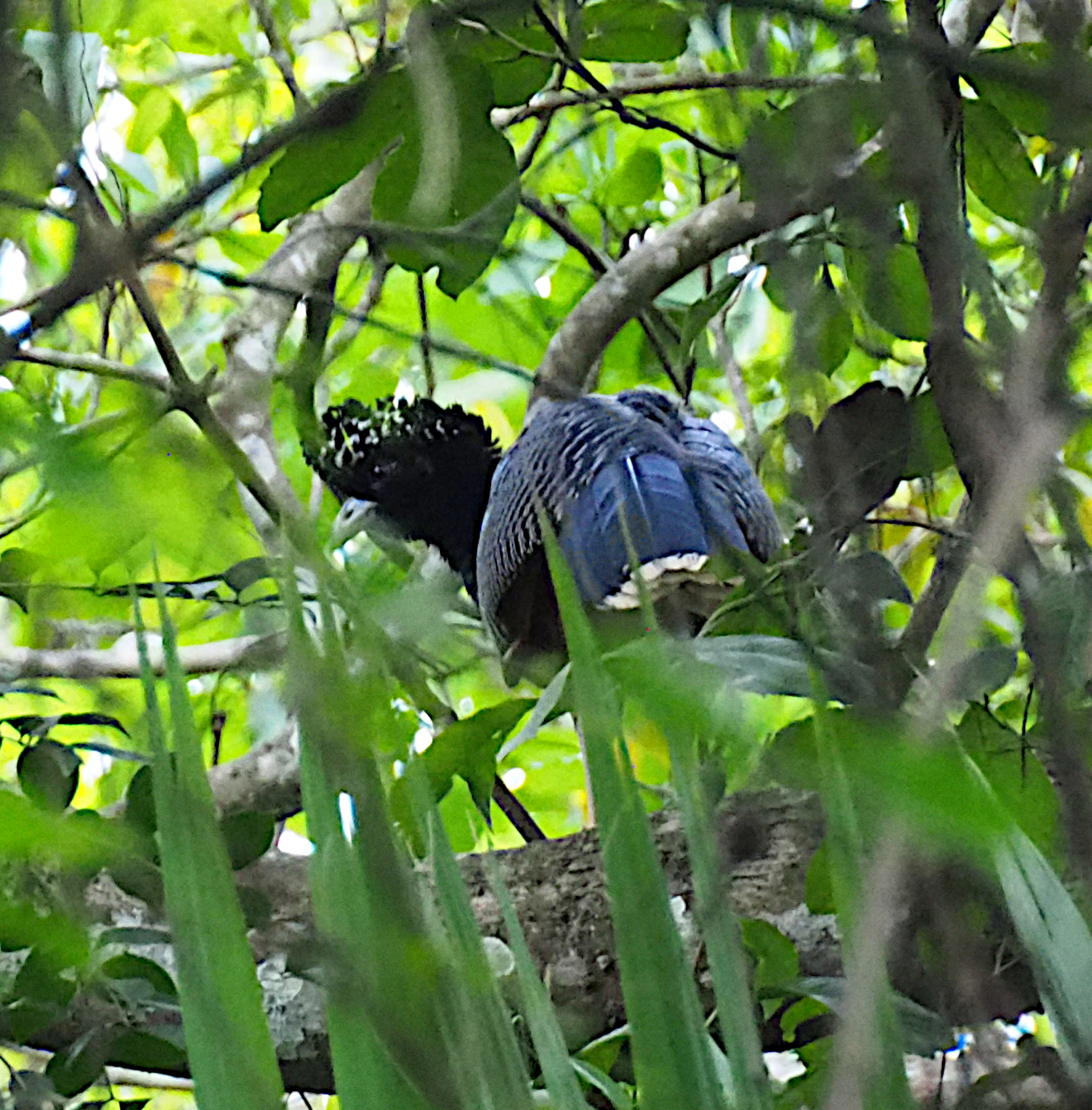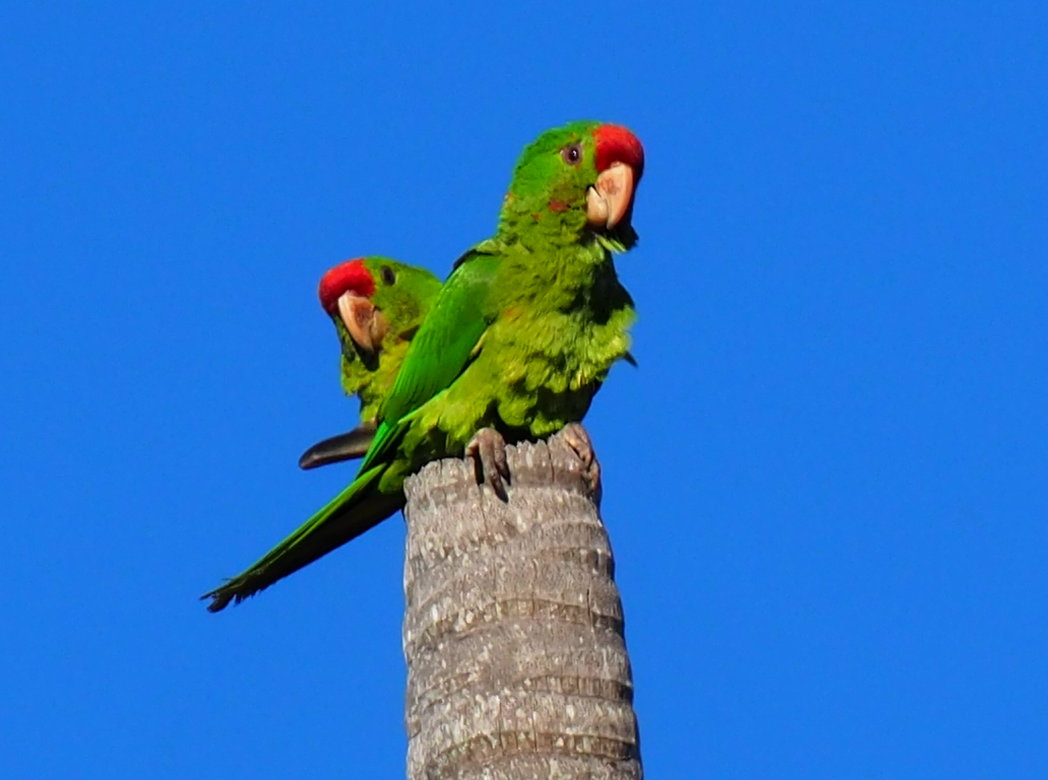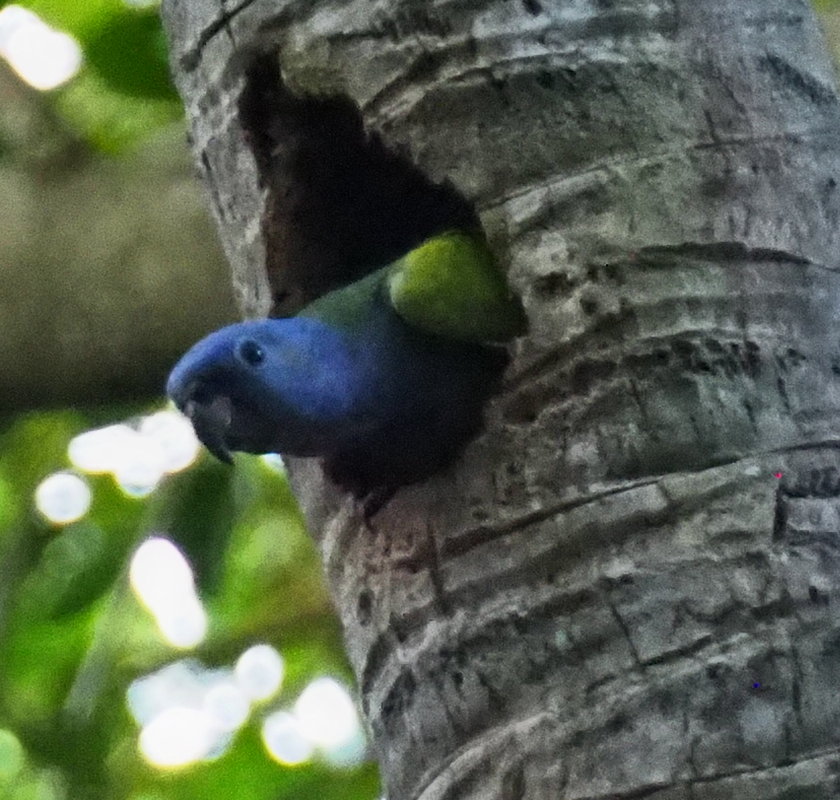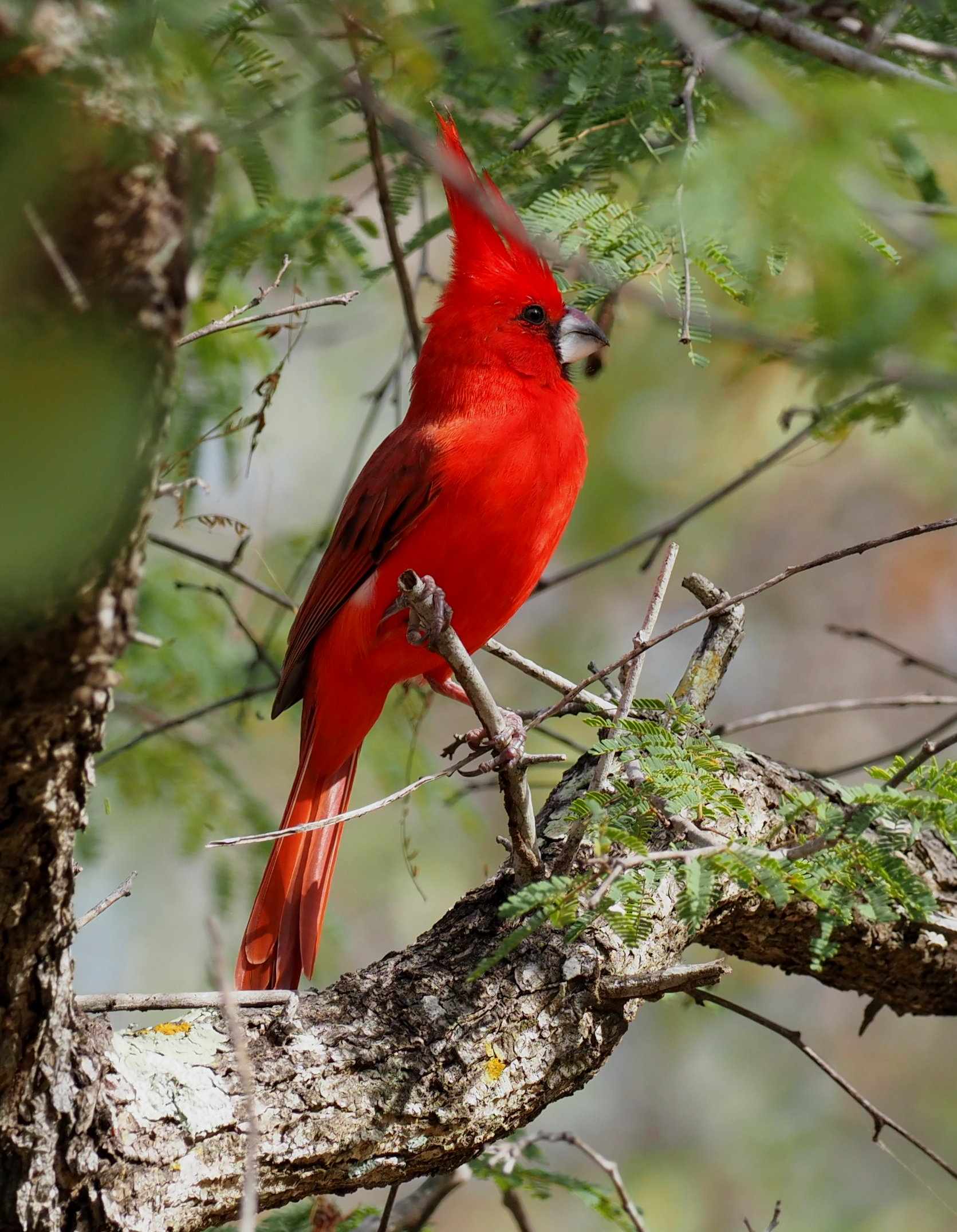Guardians of the Sky: Birding with the Kogi and Wayuu in Sierra Nevada de Santa Marta
The pre-dawn air was crisp as we began our eight-day custom Adventure Tour through Colombia's Sierra Nevada de Santa Marta, the world's highest coastal mountain range. This intensive expedition, designed specifically for our group of four adventurous birders, would take us from the cloud forests of El Dorado to the coastal scrublands of Riohacha, combining both the Sierra Nevada and Caribbean regions in a single, comprehensive journey. Over the course of eight remarkable days, we documented over 300 bird species, including numerous endemics and critically endangered species. Working with an extraordinary team of local guides, we would discover both the region's incredible biodiversity and rich cultural heritage in what represents one of our most challenging and rewarding itineraries.
Custom Adventure Tour Experience
This Sierra Nevada + Caribbean 8-day combination represents our most intensive birding experience, exclusively available as an Adventure Tour. The demanding pace and challenging terrain make it ideal for experienced birders seeking maximum species diversity in minimal time.
Prefer a different pace? We recommend dedicated 8-day tours for each region separately, available across all four tour types: Adventure, Vision, Elevate, and Souls.
Our Expert Guide Team
Our journey would unfold across eight immersive days and five distinct locations, each with its own specialist guide.
Day 1-3: El Dorado Cloud Forest Immersion
Our expedition began with three full days in the misty cloud forests of El Dorado Reserve, where David Jara's intimate knowledge of the endemic species proved invaluable. The extended stay allowed us to explore different trail systems at various times of day, maximizing our chances with the region's most elusive endemics. Day one focused on the main trails and common species, day two took us to remote areas for specialized endemics, and day three provided flexibility for return visits to promising locations and photography opportunities.
Cloud Forest Immersion
The ethereal beauty of El Dorado's cloud forest at dawn creates perfect conditions for endemic species activity, when the mist provides ideal cover for our most elusive targets.
Day 4-5: Minca & El Observatorio de Aves
Our two days in Minca brought us to a remarkable location with deep historical significance. David Faunal guided us through his family's property, El Observatorio de Aves, which sits on what was once Kogi territory. The family has spent years carefully excavating and preserving ancient Kogi ruins found on their land, creating a unique intersection of archaeological preservation and modern conservation.
Cultural Heritage & Conservation
David Faunal's family property represents a unique model where archaeological preservation meets modern birding tourism. The carefully maintained Kogi ruins serve as a reminder of the deep cultural history of these mountains, while the family's commitment to habitat conservation creates perfect conditions for both resident and migratory species.
The first day focused on the higher elevation trails where cloud forest species overlap with mid-elevation specialists. The second day took us to lower elevations and different habitat types, creating a comprehensive understanding of this remarkable ecological gradient. The extended time here proved crucial for locating mixed-species flocks and understanding seasonal bird movements.
Day 6-7: Tayrona National Park & Cultural Exchange
Two full days in Tayrona's diverse habitats provided unparalleled access to this complex ecosystem with Dagoberto Rudas as our expert guide. Day six focused on the coastal forests and their specialized avifauna, while day seven took us inland to valleys and higher elevations. Dagoberto's intimate knowledge of the park and the jungle would prove essential for our most extraordinary encounter. The extended time allowed for both intensive birding and meaningful cultural exchange with the Kogi people, as Martin facilitated our respectful encounter and learning about traditional ecological knowledge.
Encounter with the Blue-billed Curassow
Day seven brought us our most extraordinary encounter. Deep in Tayrona's inland valleys, Dagoberto's expertise led us to one of Colombia's most elusive birds: the Blue-billed Curassow (Crax alberti). This critically endangered species, endemic to Colombia, represents the ultimate prize for any serious birder visiting the region. Dagoberto's intimate knowledge of the jungle and years of experience in the park guided us to a pair of these magnificent birds.

Blue-billed Curassow
Paujil Piquiazul
Crax alberti
Blue-billed Curassow
Paujil Piquiazul
Crax alberti
A Prehistoric Encounter
Deep in Tayrona's inland valleys, Dagoberto's expertise led us to one of Colombia's most elusive birds. This critically endangered species, endemic to Colombia, represents the ultimate prize for any serious birder visiting the region. The moment we spotted the curassow pair was electric. These magnificent birds, with their distinctive blue bills and imposing presence, emerged from the understory like prehistoric apparitions.
Watching them forage through the leaf litter, completely unaware of our presence, felt like witnessing a piece of Colombia's natural heritage that few people ever experience. The birds moved with deliberate grace through the forest floor, their calls echoing through the humid air as they searched for fallen fruits and insects.
Expert Guide Insight
Dagoberto's intimate knowledge of the jungle and years of experience in the park made this encounter possible. His patient guidance and deep understanding of their behavior patterns proved essential. "These birds are ghosts of the forest," he whispered as we watched them disappear into the green shadows.
The moment we spotted the curassow pair was electric. These magnificent birds, with their distinctive blue bills and imposing presence, emerged from the understory like prehistoric apparitions. Watching them forage through the leaf litter, completely unaware of our presence, felt like witnessing a piece of Colombia's natural heritage that few people ever experience. Dagoberto's patient guidance and deep understanding of their behavior patterns made this encounter possible.
Day 8: Riohacha - Cardinal Guajiro Finale
Our final day brought us to the coastal scrublands around Riohacha, where Yeferson's ancestral knowledge of the Wayuu territory would prove essential for finding the endemic Vermilion Cardinal. The dry forests and thorny scrublands of this region represent a completely different ecosystem from the cloud forests where we began.
Indigenous Wisdom in Conservation
"The birds are the messengers of the mountain," Yeferson explained as we walked through the dry forest. "They tell us about the health of our territory, about the rains that will come, about the balance we must maintain."
Yeferson's knowledge of bird behavior, passed down through generations of Wayuu tradition, proved invaluable. He could predict bird movements by reading subtle changes in wind patterns and vegetation, skills that no field guide could teach. His understanding of the Cardinal Guajiro's habits—when it feeds, where it nests, how it responds to seasonal changes—came from a lifetime of observation rooted in cultural connection to the land.
During our search, Yeferson introduced us to his aunt, a respected Wayuu elder who taught us about local medicinal plants. Her knowledge was remarkable—she showed us various native plants, some of which are favored as food by local bird species, including the cardinal. This connection between traditional plant knowledge and bird ecology provided fascinating insights into the interconnected nature of the ecosystem and how indigenous communities understand these relationships.

Scarlet-fronted Parakeet
Perico Frentirrojo
Psittacara wagleri
Scarlet-fronted Parakeet
Perico Frentirrojo
Psittacara wagleri
Scarlet-fronted Parakeets in El Dorado Reserve
The Vermilion Cardinal, known locally as Cardinal Guajiro, represents one of Colombia's most striking endemic species. Found only in the dry forests and scrublands of the Caribbean coast, this brilliant red bird has become a symbol of the region's unique biodiversity.
Our search began in the early morning hours when the cardinals are most active. Yeferson led us through a network of trails known only to local communities, paths that wind through thorny scrub and cacti-dotted landscapes that most tourists never see.
The moment came just as the sun crested the mountains. A flash of brilliant red caught our attention—there, perched on a flowering Guaiacum officinale tree, was a male Cardinal Guajiro in perfect morning light. The bird's crimson plumage seemed to glow against the pale yellow flowers, creating a scene that epitomized the magic of Colombian birding.
Photography Ethics in Indigenous Territories
Before capturing any images, we followed protocols established with our indigenous guides. Photography in sacred territories requires permission, respect, and understanding that some areas and species hold special cultural significance that transcends their biological importance. For photographers interested in this approach, our AVES Vision photography workshops emphasize these ethical practices.
Beyond Birding: Cultural Exchange
What made this expedition truly special wasn't just the remarkable bird sightings—it was the cultural exchange that occurred throughout our journey. Sharing meals with Wayuu families, learning about traditional ecological calendars from Kogi elders, and understanding how indigenous communities view their role as guardians of biodiversity added profound depth to our birding experience.
The encounter with Yeferson's aunt was particularly enlightening. Her knowledge of medicinal plants and their relationship to local bird species demonstrated the deep ecological understanding that indigenous communities possess. When she pointed out subtle changes in plant flowering patterns that indicated seasonal bird movements, we witnessed traditional ecological knowledge in action.
These interactions reminded us that birding in indigenous territories isn't just about adding species to our lists—it's about understanding the complex relationships between people, birds, and landscapes that have evolved over millennia.

Blue-headed Parrot
Loro Cabecizul
Pionus menstruus
Blue-headed Parrot
Loro Cabecizul
Pionus menstruus
Blue-headed Parrot in Tayrona forest canopy
Conservation Through Community Partnership
Our expedition highlighted the critical importance of community-based conservation. The Kogi and Wayuu peoples have protected these forests for generations, not through formal conservation programs, but through cultural practices that recognize the intrinsic value of biodiversity.
Working with guides like Yeferson and Dagoberto ensures that tourism revenue directly benefits local communities while providing economic incentives for habitat protection. This model demonstrates how responsible birding tourism can support both conservation goals and indigenous rights. For couples seeking a more intimate experience of these partnerships, our AVES Souls retreats offer a perfect balance of birding and cultural immersion.
Species Highlights from Our Expedition
Reflections on Responsible Birding
As we descended from the Sierra Nevada, our cameras full of images and our notebooks filled with observations, we carried with us something more valuable than any photograph: a deeper understanding of what it means to be a responsible birder in indigenous territories.
The Sierra Nevada de Santa Marta isn't just a birding destination—it's a living landscape where culture and nature intertwine in ways that challenge our conventional understanding of conservation. Our guides didn't just show us birds; they showed us a different way of seeing the world, one where humans and nature exist in respectful partnership.
For birders considering a visit to this remarkable region, remember that you're not just entering a national park or protected area—you're entering someone's home, someone's sacred space. Approach with respect, travel with indigenous guides, and understand that the most meaningful birding experiences often come not from the species we see, but from the people who help us see them.
Special thanks to Yeferson Guale Epiayu (@kalekalemana1921), David Jara (@davidjara20), David Faunal (@faunal_observatorioavesminca), and Dagoberto Rudas (@dago_rdg) for their guidance, wisdom, and friendship. Their commitment to sharing their cultural knowledge while protecting their ancestral territories makes experiences like this possible. Photography credits to Royann, our early guest and talented photographer who captured these remarkable moments.
Sierra Nevada 8-Day Itinerary
Our Intensive 8-Day Sierra Nevada + Caribbean Experience
View Full Tour DetailsEl Dorado Reserve - Day 1
Arrival and introduction to cloud forest birding, focusing on common species and orientation
El Dorado Reserve - Day 2
Full day exploring remote trails for endemic species with specialist guide David Jara
El Dorado Reserve - Day 3
Flexible day for photography and return visits to promising locations
Minca & El Observatorio - Day 1
Higher elevation trails with David Faunal, exploring cloud forest and mid-elevation species overlap
Minca & El Observatorio - Day 2
Lower elevation trails, Kogi ruins exploration, and different habitat types
Tayrona National Park - Day 1
Coastal forests and specialized avifauna with Dagoberto Rudas
Tayrona & Blue-billed Curassow
Inland valleys, higher elevations, and Blue-billed Curassow encounter with Dagoberto
Riohacha - Cardinal Guajiro
Coastal scrublands with Wayuu guide Yeferson Guale Epiayu searching for the endemic Vermilion Cardinal
This intensive itinerary is exclusively available as an Adventure Tour
Request CustomizationOur Four Tour Types - Flexible Scheduling Options
While this intensive 8-day Sierra Nevada + Caribbean combination is exclusively available as an Adventure Tour, we offer all four tour types for dedicated regional experiences. Each tour type provides a unique approach to Colombian birding:
🍃 Adventure Tours
Our signature birding expeditions across Colombia's prime hotspots. 7-14 days of immersive wildlife discovery through diverse ecosystems with professional ornithologist guides.
🪶 Vision Tours
Specialized photography and videography workshops with professional wildlife photographers capturing Colombia's avian beauty in exclusive photography hides.
🌼 Elevate Tours
Premium expeditions with luxury amenities in exclusive locations for the ultimate comfort experience in Colombia's finest reserves with customized itineraries.
🍓 Souls Tours
Romantic retreats combining birding with intimate experiences in secluded, breathtaking locations perfect for couples (2 people only) with private romantic dining.
Recommendation: For a more relaxed pace, consider dedicated 8-day tours for each region separately, available across all four tour types. This allows for deeper exploration and is suitable for all experience levels.
